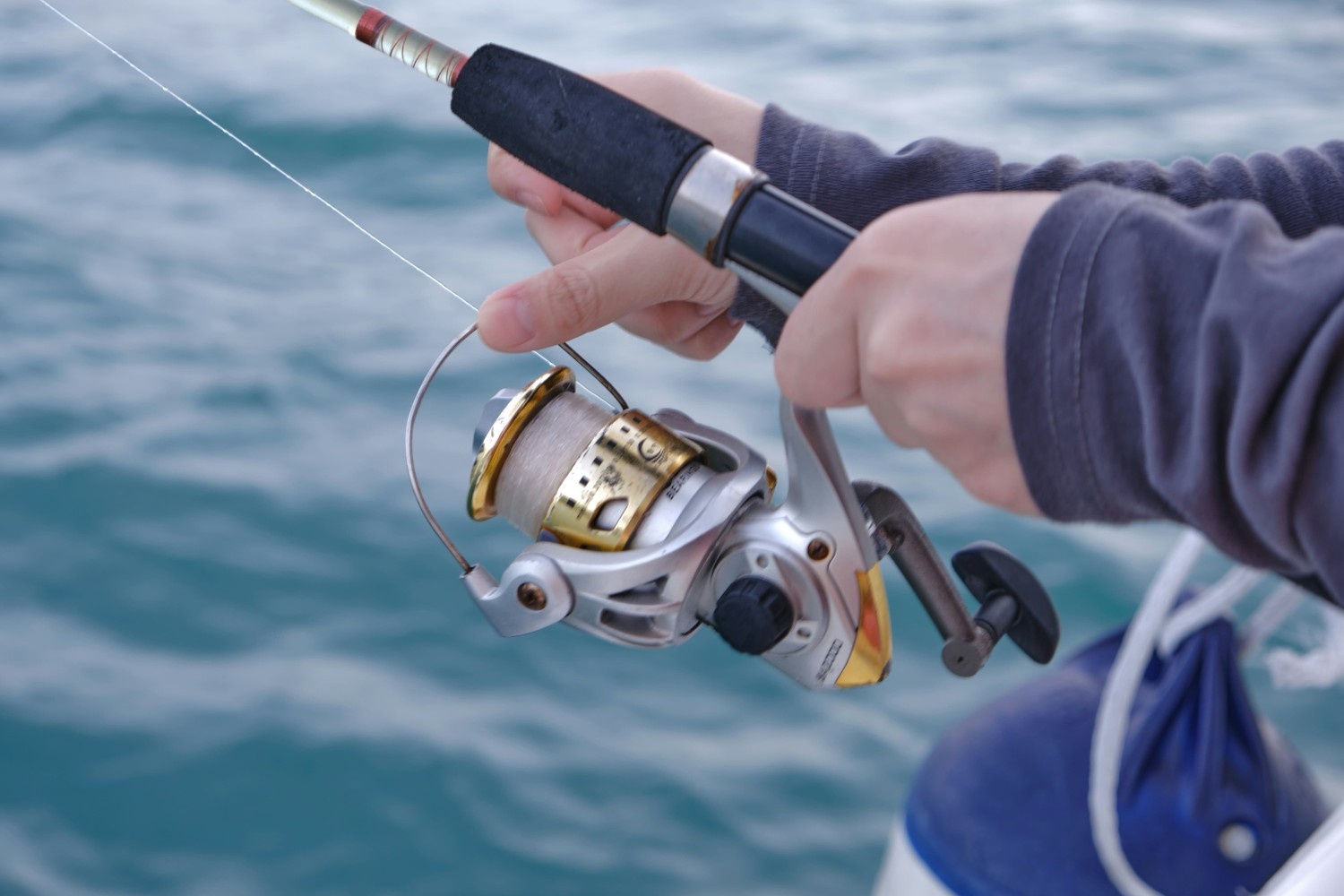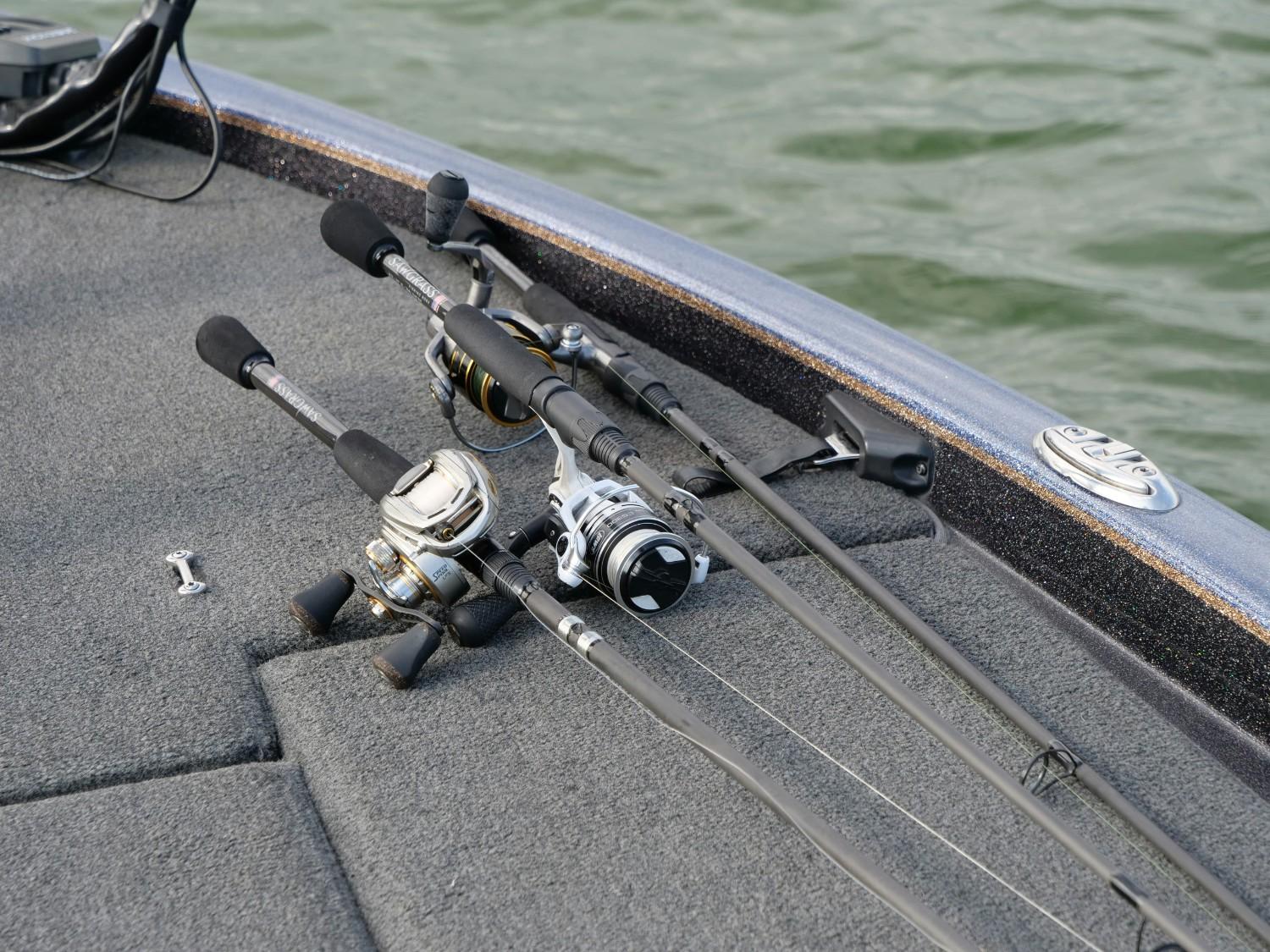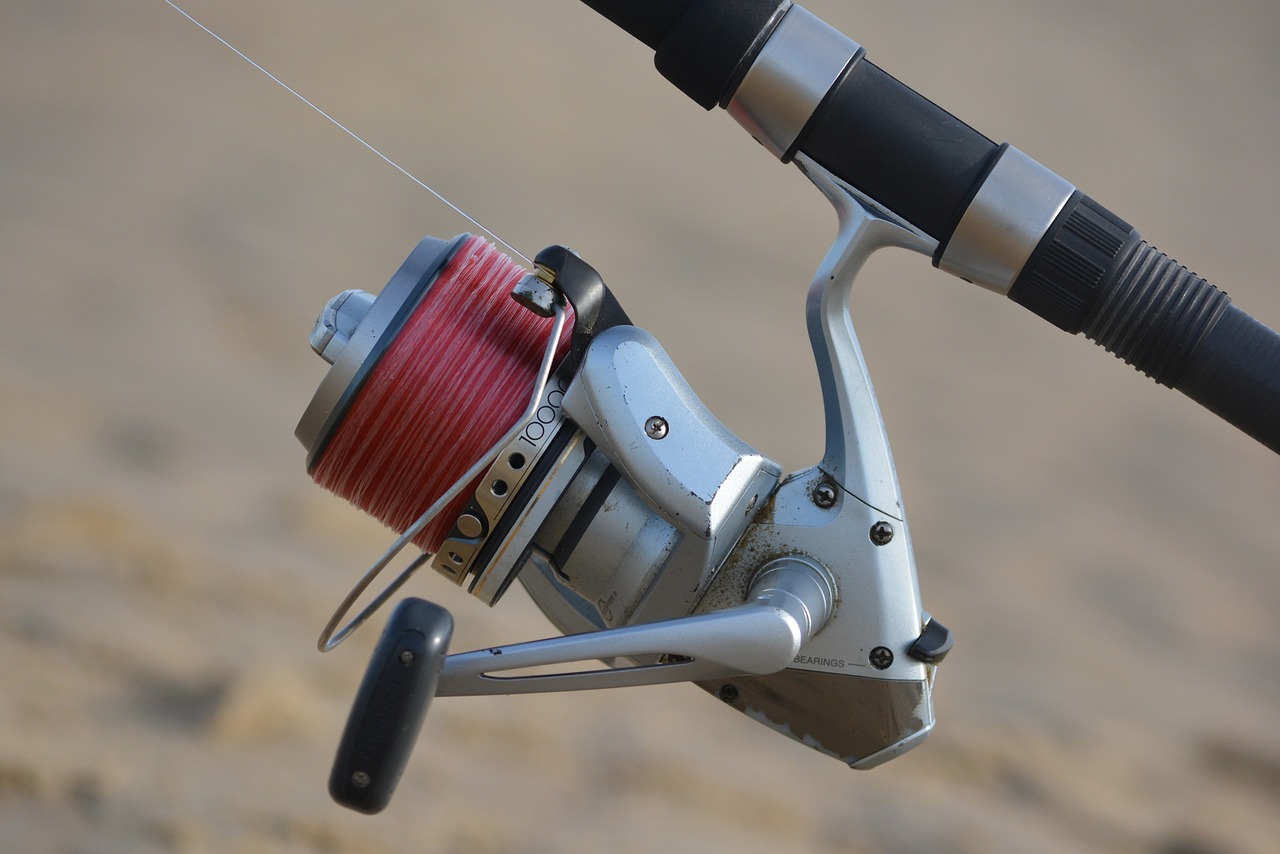Whether you are new to the sport or a seasoned angler, having quality tackle is essential for success. What is a fishing tackle and why is it important? Simply put, tackle refers to all the equipment used for fishing. This includes rods, reels, lines, hooks, lures, bait and more. Having the right tackle for your target species and fishing location is crucial for several reasons. Quality gear allows you to cast accurately, present baits effectively, detect bites, set hooks, fight fish and ultimately land your catch. Investing in good tackle makes fishing easier, more efficient and more enjoyable. With so much choice on the market, it can be overwhelming for beginners to know where to start. We will break down the key types of tackle and provide tips on building the perfect set-up.
Fishing Rods
The rod is one of the most important pieces of kit and should be chosen carefully based on your target species, venue and fishing style. Modern rods offer precision engineering, lightweight and durable materials like carbon fibre and E-Glass, and specialised actions to deal with different lures or live baits. Many feature line guides with ceramic rings for smooth casting and retrieval.
When selecting a rod, key factors to consider are power, action, length and piece construction. Power refers to the strength of the blank and its lifting capability, rated from ultralight to heavy. Ultralight models are great for catching small species on tiny baits, while surf rods need brute power to cast large weights and battle big fish. Action describes where the rod bends under pressure - fast for the tip only, slow for more downward flex. A parabolic action is a nice balance, giving a responsive tip with power lower down. Length varies from short rods under 5ft to specialist carp and surf rods over 13ft. A good all-rounder is between 7-9ft, suitable for everything from trout to catfish. Shorter rods provide greater accuracy for delicate venues, while longer rods enable you to cast further. The number of pieces refers to portability, with travel or pack rods having multiple sections that transport neatly.
Features like a hook keeper, line clip and EVA handle aid fishing comfort. Protecting higher-value rods with a sleeve prevents damage. Fishing rod licences are legally required in the UK for anglers over age 13. Annual, eight-day and one-day permits are available.
- Casting Rods — All-purpose rods ideal for casting lures, jigs, and baits. Excellent rod for beginners. Good for bass, trout, and panfish.
- Spinning Rods — Designed to be paired with spinning reels and great for casting light lures and baits. Sensitive tips detect light bites. Good for catching panfish, trout, bass, and walleye.
- Telescopic fishing rods — Offer a balance of performance and packability through folding sections that collapse down into themselves. Fly rods feature whippy tips to deliver flies gracefully across lakes for trout and salmon.
- Baitcasting Rods — Made to match with baitcasting reels. Handle heavier lures and lines. Ideal for bass fishermen and those going for larger fish offshore. Stiffer rods provide leverage against strong fish.
- Surf Rods — Longer powerful rods for seabass, sharks, and rays way out from shore. Built for extreme distance casting heavy weights and handling strong saltwater fighters. Ideal for fishing off beaches, rocks and piers. Commonly 12-15ft.
- Fly Fishing Rods — Delicate lightweight rods for casting flies using fly line/reel. Sensitive whippy actions launch flies gently towards fish with precision. Single-handed and two-handed (Spey) models are available for salmon/steelhead. Trout/panfish versions under 9ft.
- Carp and catfish pursuit — It requires 12-15ft fishing rods which spread long runs over greater flex to tire big fish. Specialist rod pods can hold multiple set-ups spread across swims for ease of bite indication.
- Kids Fishing Rods — The ones around 8ft help youngsters gradually develop expertise from small species like trout and perch up to specimen carp and pike. Terraria fishing generates essential game resources by risking rods woven from plant fibres down perilous caverns! Winter sea fishing requires resilience from rods, reels and anglers alike against the elements.
Fishing Reels
The reel complements your rod blank to form a balanced outfit. Responsible for storing lines and retrieving under resistance, reels come in a variety of types, with specific models for different fishing applications. Key choices include fixed spool reels, multipliers, centrepins and fly reels, so let's discuss the pros and cons of each.
- Conventional Reels — Basic standard for trolling and bottom fishing. Line release triggered by lever clicker. Line retrieved by rotating handle and spool. Reliable sturdy workhorse reels on boats or surf fishing for saltwater species.
- Spinning Reels — Excellent all-round reels perfect for beginners. The spool stays fixed in place while the bail wrapper spins to release and retrieve the line. Used for casting light lures and baits. Great for trout, bass, panfish and more.
- Baitcasting Reels — Advanced reels using a rotating spool rather than a fixed one. Allowing casting much heavier lures and lines over longer distances. Preferred by experienced bass anglers and for offshore fishing. Have a steeper learning curve.
- Spincast Reels — Easy to use push button design based on a closed-face spin casting reel. Ideal starters reel for children and novice anglers. Popular freshwater reel for smaller-sized fish. Affordable and durable.
- Fixed Spool Reels — Also known as thread lines or stationaries, fixed spools are the most commonly used design - simple, reliable and affordable. The line lays evenly on the spool as it comes back, ready for the next cast. Fixed spool reels excel at casting lighter lures and baits with precision. Geared models provide extra speed to retrieve lines quickly, while free spool versions allow lines to run freely when a fish makes its first run.
- Multiplier Reels — The multiplier or bait caster reel is a step up in performance - capable of handling heavier lines and extra large fish like carp and catfish. Baitcasters use a revolving spool that rotates during the cast to propel lures or live bait long distances. However, they are more difficult to master as the spool continues to spin after the cast, requiring a thumb or mag system to break it. Baitcasting reels are robust, and durable and give unmatched levels of control for accurate casting. The downsides are the learning curve and higher cost.
- Centrepin Reels — Centrepins hark back to traditional fixed spool reels from the early 1900s. Rotating around a central spindle, these simplistic manual reels rely on the angler's thumb to control line release, paying close attention to bite indication. Modern pins are engineered from strong alloys like brass for high performance and reliability. They remain popular for float, leger and trotting tactics.
- Fly Reels — Fly reels are a specialist niche, with simple single-action drags optimised for line retrieves as opposed to applying much stopping power on fish. Built light and compact to balance fly rods, expect large arbours for quick line pick up, strong disc drags and scratch-resistant coatings.
When selecting any reel, consider construction, gear ratio, max drag, line capacity, retrieve rate and body size. Conventional fixed spools in 2500-5000 sizes give the most versatility for all-round fishing. Ensure your reel compliments your rod and suits the intended purpose. Quality-engineered reels provide precision and durability for reliable service life after life.
Rigs and Terminal Tackle
We've covered rods and reels as the fundamental backbone of your setup. Now let's examine rigs and terminal tackle - the business end where fish are hooked. This includes vital components like lines, swivels, hooks and sinkers.
Fishing Lines
The fishing line transfers energy from rod tip to hook bait, plays a pivotal role in bite detection due to conductivity, and needs appropriate strength to land fighting fish. The market offers multiple line types including monofilament, braid and fluorocarbon. Let's weigh up the options:
Monofilament - Mono line has been the backbone of angling for decades - relatively cheap, low visibility, easy to knot and manage. It stretches to cushion lunging fish then springs back to aid hook setting. Good abrasion resistance. On the downside, mono is the thickest option so not the most sensitive, can absorb water over time and degrade through UV damage. Suited to beginners.
Braided Line - Opposite properties to mono as braid has zero stretch for ultimate sensitivity to feel every bite. Exceptionally thin diameter means longer casts and it rarely needs replacing. However, there's no cushioning so can rip hooks free if used directly. Braid works better as a mainline paired with a fluorocarbon leader. Popular on lure setups.
Fluorocarbon - Fluoro was designed mainly for leader material given its transparency and toughness similar to mono. The low stretch and sensitivity certainly help detect shy biting fish. Use fluoro when visibility needs reducing but beware of kinking potential with thicker lines. A slightly steeper price but a flexible choice.
Ideally, stock a selection of lines in your tackle box and vary them depending on venue and species. Have various breaking strains - remember that line weakens over time so factor this in. For main tackle, 12-20lb mono or equivalent braids should cover most bases. Fluorocarbon leaders can be 8-15lb. Replace line frequently for reliable, fish-landing efficiency.
Hooks, Swivels & Sinkers
It's vital to match your hooks and rigs to suit the size and strength of the fish you are targeting. You should carry a range of hook sizes - from tiny #22 hooks for catching small tiddler-sized fish, up to giant single hooks sized 8/0 or 10/0 for massive carp, catfish and pike. Leading hook brands like Mustad, VMC, Fox and Gamakatsu make exceptionally strong forged hooks that penetrate fish mouths deeply and won't fail under pressure. The goal is to set a very secure hookhold that keeps even powerful fish safely hooked right up to the landing net.
It's also useful to have various swivels in your tackle box - barrel swivels, rolling swivels and ball bearing swivels help prevent line twists when fishing spinning lures or live baits. Better brands like Quantum use rounded smooth shapes that don't impede natural bait action. Finally, carry enough lead sinkers or feeders to suit all your swim scenarios. Curve shank "grippers" can be secured on the line temporarily and then slid up and down to adjust weight. Alternatively, clips or rings allow quick rig changes. Solid carbon fibre, steel or eco-tungsten are lead-free alternatives for avoiding toxic pollution. Just ensure weights suit the current flow and casting distance while staying securely fixed to rigs.
The key things to remember are - match hook sizes to target species, choose strong sharp branded hooks for reliable penetration, add swivels to prevent line twist, and carry enough weights for adjusting rigs quickly based on swim conditions and bait size. Continually fine-tune terminal tackle to improve catches!
Fishing Chairs and Beds
While rods and reels take priority, comfortable seating should not be overlooked on extended fishing trips. Standard chairs become tiresome over long hours battling elements and monitoring rod tips. Specialist fishing chairs focus on ample padding, adjustable positions and practical features catering specifically to anglers' needs. Carpers and catfish fanatics do frequent overnight sessions or even week-long camps. Hauling bedchairs and sleep systems enables grabbing 40 winks while awaiting takes. Let's explore some leading options:
Fishing Chairs
With long angling sessions, quality chairs prevent discomfort from setting in. Seek ample dense foam padding to support the contours of your back while sitting for hours. Additionally, wide, elongated bases with non-slip feet prove stable on uneven banks without sinking into soft ground over time. Seats that swivel 360 degrees allow regular repositioning to relieve muscles as well as easy side-on access to attach alarms or adjust rod pods behind. Separate head/lumbar cushions adapt to individual support levels. Armrests alleviate shoulder strain when battling strong fish. Robust powder-coated steel tube frames withstand repeated use for years especially if collapsible folding flat for storage/transport between sessions. All-weather fabrics resist UV damage, staining and moisture. Side pockets, attachments and extendable accessory arms keep vital equipment like bait boxes and bite alarms within easy reach. Chance lengthy PB battles more comfortably! This chair selection should withstand years of regular trips to favourite waters. Focus on adjustability, stable footprint, dense weatherproof padding and heavy-duty construction for lifelong reliability across seasons.
Fishing Bedchairs
When overnight camping beside productive waters, decent bed systems transform sessions enduring weather extremes. Seek solid yet portable foundations with reliable height-adjustable legs securing ideal positioned comfort. Additionally, underbed storage spaces efficiently utilise area clearing bulky luggage off floorspace ready to grab items easily in darkness. Yet ensure keeping essentials accessible not buried impractically deep. Cushioned mattresses with thick layered foam and firm support structures properly align the spine avoiding painful pressure points over extended lying. Modular supplementary air beds add customised thickness. Antibacterial hard-wearing covers resist moisture, mould and odours across years of repetitive use. Clever ventilated airflow zones or removable mesh panels combat condensation which ruins sleep. Integrate generously stuffed pillows tailored to cushion neck muscles relieving tension. Or double up providing plush adjustable seating positions. Robust weatherproof construction stands up to damp, sand and mud while easy-wipe cleansing maintains lasting hygiene between regular campaigns.
Bivvies & Shelters
Quality bivvies become reliable bases securing bedchair setups keeping occupants and belongings shielded dry. Breathable fabrics prevent interior condensation yet repel all external rainfall concatenations. Seeking ample height ensures bed chairs slot under while allowing sitting up freely moving around. Panoramic adjustable window panels maintain visibility scanning waters through storms yet sealing fully shutting out icy winds come nightfall. Wrap over removable infill skins efficiently seal enlarging porches into protected standalone mini-rooms come harsher months. Zips open/shut individual panels or doorways for personalised ventilation balance between dampness and air circulation. Focus arrangements securing ample pegging points for storm-level anchoring resistance. Reinforced metal eyelets won't tear or rust over the years. Additional poles including reinforced ribs/spreader bars maintain taut shaping dealing with onslaughts enduring days. Perfect bivvies become versatile year-round second homes where losing oneself escaping daily stresses awaiting leather thumping alarms signalling explosive battles destined to last eternally within memory banks.
Local Tackle Shops
We hope this guide has provided a solid overview explaining fishing tackle families and what to look for when building that perfect set-up. Finding nearby stores that stock reputable gear is the next step. Luckily, most towns still have dedicated independent dealers brimming with expertise. They offer new and used gear plus repairs and advice.
Here are some of the finest fishing tackle shops located nationally:
Angling Direct - fishing mega store with huge stocks
Pollawyn Tackle Cornwall - bait, beach casting and boat tackle
Veals Mail Order - over 500 rods, reels and accessory brands
Fosters of Birmingham - major Midlands fishing retailer since 1817
Farlows of London - iconic London tackle shop dating from far 1840s
Fox Tackle Box - Danny Fairbrass’ famous tackle site
Getting to grips with the key rods, reels, rigs and accessories is essential to develop your angling ability. We always recommend buying the best quality you can afford from reputable brands via specialist tackle shops. Their expertise will guide you to make sound investments for future success. Tight lines!
Related articles

Let us know you agree to cookies
We use marketing, analytical and functional cookies as well as similar technologies to give you the best experience. Third parties, including social media platforms, often place tracking cookies on our site to show you personalised adverts outside of our website.
We store your cookie preferences for two years and you can edit your preferences via ‘manage cookies’ or through the cookie policy at the bottom of every page. For more information, please see our cookie policy.












